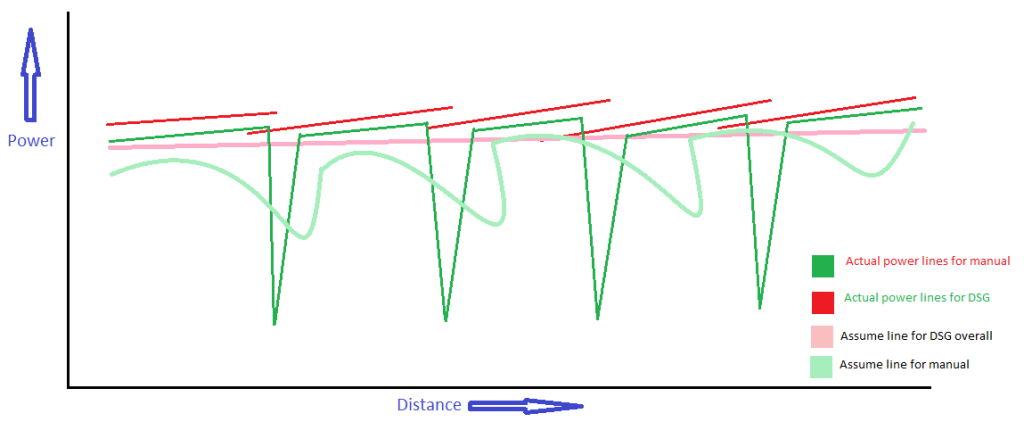Dual Clutch v/s CVT vs Conventional manuals
Currently, many car manufacturers are moving towards automatic transmission to make our lives a lot easier. Cars were dreams for a person yesterday, now they have become a symbol of status, lifestyle, fun, and adventure for us in day-to-day life.
So now moving towards our competition between these three main competitors, who are of course for this current time DCT (dual-clutch transmission), CVT (continuously variable transmission), and the conventional manuals (operated by foot and gear levers).
Let’s start things slowly now.
DCT is a transmission system that uses two clutches instead of one to shift the gears. This means, for 1,3,5,7 gear there is one clutch and another one is to operate 2, 4, 6, and reverse in a typical 7-speed gearbox. Both the clutches are always ready to shift gears as fast as possible, which means if you’re in 1st gear, another clutch is ready to operate the 2nd gear. When your ECU (engine control unit) detects that you’re in the correct range of shifting, it changes the ratio without even giving you a jerk. This gearbox is very smooth and even very reliable for high torque-carrying situations. The German manufacturers use this technology widely. You can find it in the VW Polo GT-TSi, Vento TDI AT, Jetta 2.0 Highline TDI; Skoda Octavia, Rapid Elegance AT, Superb; Audi A6, Q3, etc.
A figure showing the comparison between conventional manuals vs DSG is attached below. Here you can see in the red and pinkish line that the DSG shifts without any drop in power or torque, as the clutches are continuously in contact with each gear ratio so that shifts without the full engine cutting from the transmission system. Where On the other hand, you can see the dark green line showing a fall in power while shifting gears in a conventional manual gearbox, here driver is depressing the clutch and disengaging the engine from the drivetrain, which means no power will be transmitted while that time, and again the engine will be connected with the drivetrain, so this reduces the efficiency of the engine and increases the engine power wastage.
Now comes CVT into the picture…
Honda City, Jazz; Audi A4; Nissan Micra, etc come with CVTs now. Even 2-wheelers come with CVTs, i.e. Activa, Deo, and many more. First thing first, how does it work? It’s complicated to understand on paper but; let’s try it. You all have seen the belt and pulley mechanism on the lathe and other machines. They have 3-4 slots to fit the belt in them. Now to change the speed ratio you change the slots, so imagine a hydraulic system with a brain that does the same thing for you without even your influence. Yes, CVT is a modern belt-pulley drive but with much more ratios than 3-4, it has a hydraulic system that senses the speed and load, and as per that it changes the ratio to get the best performance from the engine and maximum efficiency at the same time. Unlike DCT, they are cheaper but can transmit a limited amount of torque, as it has a belt, and slipping does take place. CVT gives you the freedom to find the best comfort zone of the engine, on a certain RPM range; you may get different ratios, which means it gives you efficiency when you want it and performance when you need it. It also doesn’t let you know when the ratio is changed. CVT does not contain any GEARS to work with, they change diameters and the work is done for you.
The conventional manuals…
Ah, finally on our favorite thing, which is fully in our control. Depress the clutch, change the gear, put the clutch back and you’re good to go repeating the process again and again. And in the traffic condition, Imagine yourself holding the clutch pedal for hours, and imagine the half-clutch driving, which helps your clutch to kill itself. It is the cheapest among all the gearboxes to buy, but as shown in the figure, it reduces efficiency and increases the wastage of engine power. It helps to increase stress levels in humans too.
Automated Manuals.. Or so-called (A-MTs)
In this system, the clutch is pressed by the hydraulic system instead of your limbs. The system does all the jobs that your legs do to disengage the drivetrain from the engine. You need to press the button or pull/press the lever mounted on the steering (paddle shifter) or mounted in place of the conventional gear lever. Used in Tata Nano; Suzuki Alto no-a-days.
+VEs of DCT:-
- Lightning-fast shifts mean fast pickup for racing and fun
- Can work with even high-torque applications
- Both hand always plays with the steering for better control of the car
+VEs of CVT:-
- Fewer parts mean low-cost
- Good acceleration without wasting power
- Smooth-shifting and step-less ratios provide you with ride comfort
+VEs of Manuals:-
- Involving the driver
- More fun to drive as the driver stays connected to the whole car while driving
- Can hold gears unless the driver changes himself
- Cheapest among all
Now, what about the negatives?
-VEs of DCT:-
- Cost
- High technology involved means a higher risk of failure
- Heavier than conventional ATs
4. If you crash the gearbox, start looking for another car as it may lead you to a heart attack by its repair bill.
-VEs of CVT:-
- Boring in one word
- Rubbery shifting felt during sudden acceleration
- The belt gets worn out in nearly 50k km
-VEs of conventional Transmission:-
- The clutch, hold that little thing in the stop-and-go traffic, and your face will tell the angry emotions inside you
- Power loss while shifting
In short what to buy?
If you have money and buying a car with a huge smile on your face go to the Dual shift box. Porsche, Audi, and BMW provide DSG, PDK, etc named transmission boxes, which are ultimately the DCT (dual-clutch gearbox). That gives you continuous power delivery without even a jerk.
If you’re a person like me with less money in your pocket but want an automatic and can manage to drive with good performance and efficiency, go for CVT options. They provide excellent fuel economy and good drive-ability, but again it has some rubber-band feeling in it, try not to go hard on the gas paddle.
And then, most loved manuals are there in the market for us to connect us with the car just like we connect our phones to the charger after it shows a low battery sign. They are fun to drive. They are reliable; you won’t find yourself in the middle of the road for the failure in the transmission which could be in the case of DCT, as they are not yet tested to their bones in our country.
The new technology of gearbox, which is automated Manuals, is cheaper than Dual clutches and helps you to shift gears without any of them, which is also fun to drive. Yet, it also disengages the drivetrain from the engine so they are also far away from the competition of CVTs and DCT, but they do the work for you.





